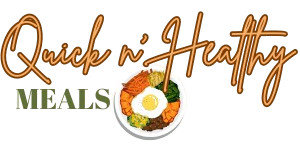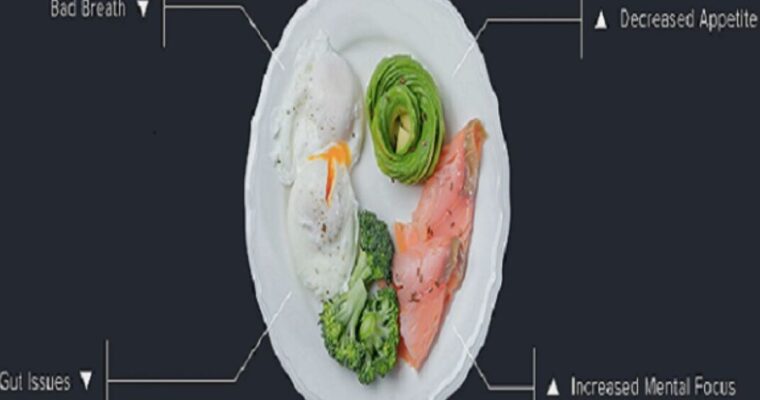I created this blog to provide quick and healthy meal ideas, recipes, and product reviews for busy individuals looking to lead a healthy but convenient lifestyle. As such, a big part of the mission of staging.quicknhealthymeals.com is to provide information about meal planning and diet choices that can help you achieve optimum health via weight loss.
Obesity is a real problem in this country with nearly 40% of the adult population being overweight or obese. The rates for children and young adults are not much better with nearly 19% of that population being overweight or obese. Increased incidence of diabetes, high blood pressure, and fatty liver disease are at an alarming rate among both the adult and the youth populations.
All is not lost, however, and while there are tons of diets, pills, potions, and other weight-loss gimmicks, there is only one true way to safely and permanently lose weight. This article will focus on my experience over a lifetime of battling weight gain and how I finally learned how to lose weight naturally.
Why Are You Overweight or Obese?
The first and most important step in losing weight naturally, is to first determine the underlying cause of your current weight. Are you overweight because of the following?
- Medical condition
- Genes
- Over-eating
- A combination of one or more of the first three
Let’s examine each of these elements one by one to show how they can be overcome to enable you to lose excess weight. We’ll start first with medical conditions then move on to genes and finish up with the main cause of obesity – overeating.
Medical Condition or Disease:
If you have a medical condition that you feel is causing you to gain weight, then you need to research alternative ways to mitigate the side effects of your condition or any medication you may be taking to fight it. Medical conditions that may cause weight gain include:
- Cushing’s Syndrome
- Diabetes & Metabolic Syndrome
- Underactive Thyroid
- Polycystic Ovary Syndrome (PCOS)
These are by no means all the medical conditions that can cause weight gain, but they all can be dealt with by taking the correct medication while feeding your body nourishing and healing foods. Work closely with your physician to determine the best course of action for your weight loss process.
Genes:
Next let’s look at genes. We can’t change our genes, but we can work with what we have to enhance our metabolism by eating the right foods and staying active.
It is also important to have realistic expectation for your ideal body size. You will never have the body of Twiggy if your genes are programmed for a larger frame or body type. If you maintain a calorie deficit and add an exercise regimen, you will be able to achieve a healthy weight and toned body.

Overeating
Finally, we’ll look at the most prevalent cause of obesity – over-eating. Many of us overeat for a variety of reasons including:
- Boredom
- Depression/Anxiety
- Excessive Hunger
No matter the cause of over-eating, what most of us need is a blueprint of what to do and what not to do in order to finally stop and be able to lose weight safely and easily.
Bottom Line: To lose weight, you have to do the psychological work to determine why you choose to overeat. Once you have this information, you are halfway to permanently losing excess weight. The second part is to employ what I call my ultimate weight-loss formula.
My Ultimate Weight-Loss Formula Weight-Loss Formula
The ultimate weight-loss formula = Burn more calories than you eat. That’s it!
Barring a medical condition, if you maintain a caloric deficit, your body will have no choice but to use your stores of fat for energy leading to weight loss.
I know this is not ground-breaking information, but so many people get caught up with all the millions of diets, pills, potions and all sorts of other madness in their effort to lose weight that they lose sight of this very basic fact. So how do you employ this formula? The first step is to find out how macronutrients affect your body.
How Does Your Body React to Macronutrients?
Many of us do not think of the impact that macronutrients can have our bodies, but if you take the time you can easily find out how what you eat affects your metabolism. What do I mean by macronutrients? Very simply, macronutrients are those derived from the three main food groups including:
- Proteins
- Carbohydrates
- Fats
You can jump-start the macronutrient discovery process by simply looking at your personal and family history. For example, does anyone in your family have diabetes or hypertension? If so, do you know which foods they can and cannot have? Armed with this basic knowledge, you can discover which foods you can eat and the ones you may want to avoid.
Case Study: I’ll give a concrete example here using my own weight-loss journey. My family has a history of diabetes and/or metabolic syndrome. This is evinced by the rolls of fat present around our midsections. What this essentially means, is that while I’m an avowed chocoholic, I cannot just eat all and any chocolate candy or confection that I see.
I had to discover this sensitivity to sugars and carbs the hard way. After a lot of trial and error with different foods and diets, I’ve discovered that if I consume too much sugar or too many carbs, my ankles will swell up to the size of tennis balls the very next day. This was a rather unorthodox way of my discovering that I’m carb-sensitive. And before you ask, yes, I have had medical tests to make sure that my heart, kidneys, and lymphatic systems are functioning properly. My swollen ankles really are a direct result of eating too many carbs.
This physical reaction to carbs led me to seek out a way of eating that would keep carbs to a minimum while keeping me sated and satisfied. I tried, Paleo, Vegan (very briefly!), Whole 30, and the Keto Diet. I ended up gaining weight on all of these diets except for one important variant – I lost inches from my waist, thighs, and arms while on the keto diet.
As you can imagine, I was quite excited when I noticed that my clothes were starting to fit loose and I had to draw in my belt buckle up another notch. I was losing inches yes, but I still wanted to see actual weight loss on the scale. I still had to find a plan that would give me the inch loss I experienced on keto while also showing actual weight loss on the scale.
My Magic Bullet for Accelerated Weight-loss
To recap: I was doing keto and losing inches but not weight. Then I tried monitoring my caloric intake but failed to be consistent with it. This grounded my weight loss to a halt because I was overeating every other day. I needed something else to keep me on track.
I know myself enough to know that I need structure and guidance to succeed at any endeavor I undertake. This means that I needed something else to keep me within the confines of my caloric requirements, I needed a magic bullet.
Enter IF or intermittent fasting. Combining keto with IF was the key that finally unleashed my fat-burning furnace. It really is the perfect way of eating for me because it provides the tools I need to consistently lose fat. I made a minor tweak to my weight loss formula making the final version:
Caloric deficit + 8-hour eating window = 1 to 2 pounds of consistent fat loss every week!
I’m by no means suggesting that Keto-IF is the ultimate weight loss diet for everyone, but it sure is for me. It’s my ultimate magic bullet for consistent weight loss. You will have to find out which diet is best for your body type, be it:
- Vegan
- Paleo
- Keto
- Intermittent Fasting
- DASH
- Mediterranean
The main thing is to remember the following rules:
- Follow a diet that includes foods you like while avoiding the kinds that negatively impact your body weight.
- Maintain a caloric deficit that allows you to lose at most 2 pounds every week
- Weight loss is 80% diet and 20% movement, so include exercise that you enjoy for a minimum of 1.5 hours each week.
By following these basic steps you will lose fat and excess weight in the safest way possible. It’s not fast but it’s sure and steady.
Increase Your Chance of Success: Use Weight-Loss Trackers & Tools
If you follow the recommendations listed above, you will be well on your way to losing weight. You can greatly increase your chance of successfully losing weight by using a few tools to make the process easier and more streamlined.
Knowing yourself is very important to losing weight. As I’ve mentioned, I know that I need step-by-step guidance to tell me what to do and when to do it. Having a plan of action puts my weight-loss on automatic and helps to keep me on track. Using proven weight-loss plans, tools, and trackers gives me an even better chance of succeeding.
There are literally thousands of meal plans and apps available for anyone that needs help to lose weight. They help to:
- Track calories and macronutrients
- Track workouts
- Calculate Body Mass Index (BMI) & Basal Metabolic Rate (BMR)
- Provide appropriate meal plans
- Track weight loss
My first fitness tracker was Myfitnesspal because it allowed me to enter my own recipes to come up with accurate caloric and nutritional information. I’ve since moved on to Cronometer because it has a multitude of features and it even allows you to enter the diet or way of eating you’re currently following.
Cronometer also tells you exactly how many calories to eat every day depending on how much weight you want to lose and how fast you want to make it happen. It also tells you how many calories you’ve burned from any type of exercise or workout you do. For me, it’s the best diet and nutrition tracker in the market today.
Putting It All Together
After years of trial and error, I’ve put together this easy-to-follow blueprint for effective and lasting weight loss for anyone who has lost hope. If you follow the method I’ve outlined you will finally lose excess weight once and for all. To summarize, do the following to crank up your fat loss:
- Determine the cause of your excess weight. Get treatment for any medical conditions that lead to weight gain.
- Maintain a caloric deficit to safely lose between 1-2 pounds each week
- Incorporate an exercise regimen that you enjoy. There’s no need to kill yourself with exercise, 1.5 hours per week is enough.
- Use fitness apps, trackers and other tools to help streamline your weight loss.
I challenge you to really listen to your body to find out which foods make you gain weight. From there follow a diet that you like and incorporate some exercise into the mix. Give this process and yourself an honest try for at least a month and let me know what happens. I guarantee you will lose fat and weight.
Have you struggled with losing excess weight? Did you succeed? Let me know in the comments.











